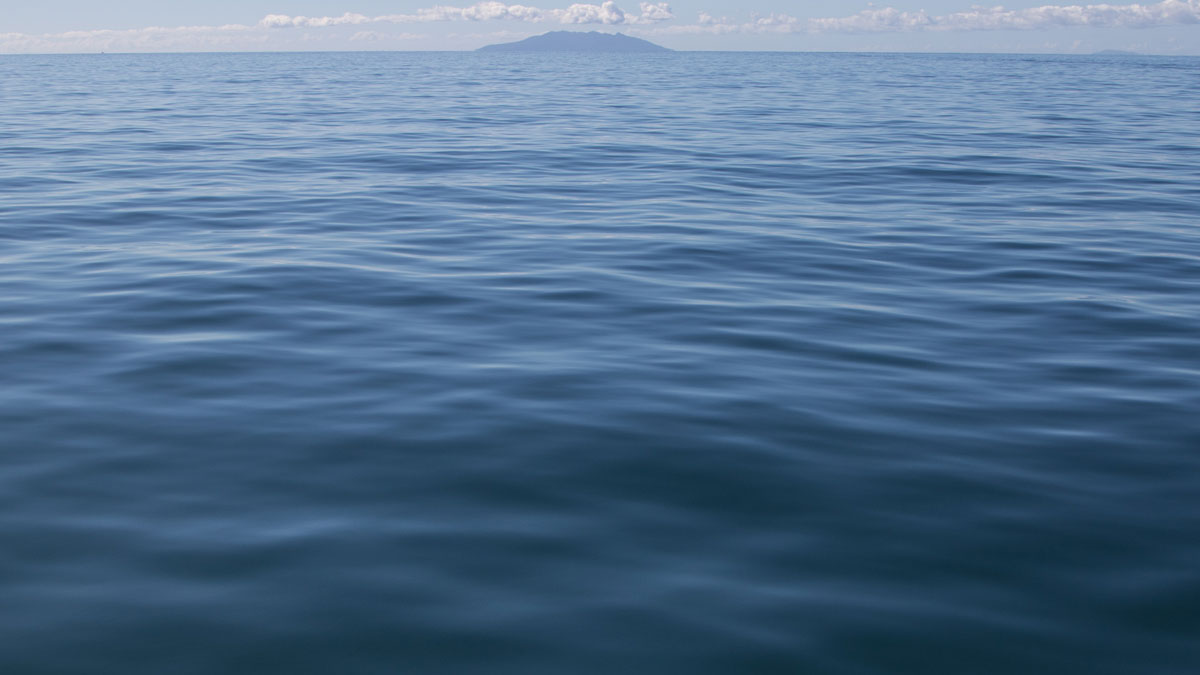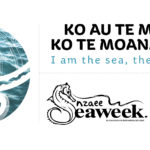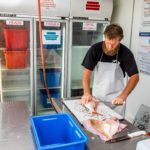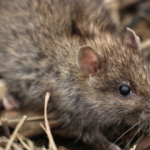Changing the world – Rob Fenwick
As last speaker of a very thought provoking day, I’ve been asked to do a bit of star-gazing and imagine a different future for our Hauraki Gulf.
As it is with many of you … I like to think the gulf has personified my life. I’ve camped on it, I’ve raced yachts on it, fished it, dived it, water skied and paddle boarded it, kayaked and netted it. I’ve helped restore its islands and campaigned to lock up parts of it. I’ve made a business out of parts of it. I’ve farmed in it and around it. It’s sustained me with thousands of meals I’ve caught or bought; it’s nourished my soul when I’ve stood on the duck board of a launch in a deserted bay, the morning sun on my face, as I slip into the sea for a morning dip.
As I wrote these notes, I was gazing from my desk across to Pakahi Island down to Orere Point … a freshening southerly whipping up white caps over the Three Sisters … the gulf is in my bloodstream.
To imagine the future we’ll need a timescale. Any date would do … but for the sake for argument let’s say 2050, the date by when New Zealand’s carbon emissions will be 50% of what they were in 2005 … and the Antarctic Treaty will have just been renegotiated, maintaining a ban on mineral and oil extraction on the frozen continent.
Thirty five years.
A generation and half in human terms – less than a heart-beat for the Earth. So it’s year 2050. New Zealand’s a democratic republic and we’ve changed the flag to something – dunno what. What’s changed in our beloved Hauraki Gulf?
Well, the inexorable impacts of climate change will be manifesting in the gulf. The great Antarctic ice sheets … storing more than three quarters of the planets freshwater … have accelerated their march to the sea …Sea levels have risen 15 centremetres creating erosion issues for coastal infrastructure and development. It’s stormier and seas are warmer … by about 1 degree centre grade … and as the oceans absorb more carbon, they’re more acidic …
Evidence of tropical marine life is becoming evident, with the arrival of new viruses and blooms. Aquaculture in the gulf is having to rapidly adapt to bigger tides, altering farming techniques and adopting on-shore husbandry and new farm species to cope with more acidic seawater. On land as tropical weather systems sweep down from the north, flooding strips topsoil into the sea, stealing more of the nation’s most valuable economic resource and sending giant brown plumes down the Firth of Thames.
Grass and crops are growing faster and so are weeds and new tropical weeds are arriving. Some native trees are thriving, some are showing signs of stress.
The population of Auckland is browner and has risen to two and half million. While Pacific Island climate refugees are among them, most new arrivals are immigrants who have paid a hefty price for their visas.
Auckland is prosperous. New businesses in high tech and high value food are competing with the world’s best. Annual tourism arrivals through Auckland have topped 8 million. There are many more cruise ships as carbon tax has made air travel expensive to tourists. A hydrogen based aviation fuel is on the horizon.
Peace has broken out between the iwi of the Tamaki and Hauraki collectives. In the three decades since their claims were settled, the Maori economy in Tamaki has grown to $5bn. Co-governance of the volcanic cones and gulf islands is constructive and Maori owned tourism businesses are flourishing.
Some new great walks on Rangitoto – Motutapu and the Barrier offer quality lodge accommodation. The extended runway on the barrier has a commercial jet service and the waka experience with traditional waka sailing around the Gulf, is a must do commercial success… DOC and Auckland Council’s Parks have decided to merge in Auckland and integrate the management of their regional parks and gulf islands and operate under coherent biosecurity and biodiversity policies. The new agency has a strong customer focus.
The merger enabled a co-ordinated assault on predators. The archipelago of Tiri tiri Matangi, Rangitoto Motutapu, Motuihe, Rotorora, Rakino – the inspiration of volunteer conservation – is being joined by urban based initiatives to rid Waiheke Kawau and Great Barrier of rats and wild cats, Hauturu operates like a great gulf wide hatchery producing rare birds that are now nesting in new safe locations.
On Ahuahu, at the centre of the Mercury and Cuvier archipelago, which has been predator free for three decades, is teeming with birds and invertebrates.
On the mainland all the regional parks, Hunua and Waitakere Ranges and large tracts of Coromandel are predator free. Kiwi, kokako and kaka are seen regularly and many nest in urban environments through this halo effect. While 1080 has been the principal assault weapon, new multi kill traps and reinvasion prevention technologies are finally being manufactured in commercial volumes. In this sub-tropical climate, weeds are thriving. The new regional conservation agency is promoting a citizen campaign against invasive weeds using selective technologies developed to replace glyphosate herbicides.
The agency is also addressing new social needs. Every year it ensures every school kid in Auckland has a conservation experience, whether a beach or a forest visit … and experiential learning through Enviroschools, Garden to table and Trees for Survival are compulsory.
A significant policy shift has occurred within Auckland Council.
Ports of Auckland has constructed an inland port in Westfield and connected it with a high speed freight rail to an expanded container terminal at Northport which they partly own. By eliminating one port from the New Zealand run they’ve been able to negotiate better contracts with the shipping companies.
It’s been funded in a joint venture between Auckland Council, Kiwirail and an overseas development bank, and with cash from selling port properties for urban dwellings, desperately needed hotel accommodation and associated retail and hospitality businesses.
With less container truck movements traffic congestion on Auckland’s motorways has eased. There are more commuter ferries serving terminals on North Shore, Te Atatu and Tamaki River. Anyway, third of the national motor fleet is electric.
With the new high speed container service Kiwirail is competitive and is investing in new services and infrastructure.
With the container ships gone, whales thrive in the gulf.
The Hauraki Gulf remains Auckland’s jewel … and because of it and the lifestyle associated with it …
Auckland continues to attract skilled people and investment. Imagery of the gulf is at the heart of brand Auckland .. and tourists are spending longer here to enjoy attractions, … both adventure based and nature based .. on the land and sea. Many businesses are owned by Maori.
This persuasive Hauraki Gulf brand is extended to high value food. Wine and olive oil from Waiheke; organic lamb and beef from Motutapu, Ponui and the Barrier enjoys a premium value in top-end overseas markets. The price of high manuka honey from revegetated islands, has soared. Hauraki Gulf branded oysters and mussels, being harvested the day they’re served, are in high demand in Auckland restaurants and hotels. Employment on niche, land based and aquaculture sectors is growing.
While the gulf’s major environmental risk is still evident – nitrate loadings and sedimentary run off from dairy farming in the Firth of Thames, coastal farming has changed significantly over the past 30 years. Dairying prices never recovered to the heady heights of 2014, and in 2025 agricultural emissions were finally included in a tougher emissions trading scheme. By then too, global consumer confidence in New Zealand’s commodity farming policies had been severely tested.
Many farms converted to milking large flocks of sheep for higher value ewe milk, reducing soil compaction and lowering nitrate loadings. Low fat ewe cheese has become another specialty from the Hauraki Gulf, with better returns and lower environmental risks.
Leading many of these changes has been the Hauraki Gulf Marine Park Forum. It morphed into a research based agency funded largely by the various sectors that compete for the gulf’s resources. Tourism, conservation, aquaculture, fishing both commercial, indigenous and recreational, and transport services. And land based sectors including – coastal developers and farmers. They coalesced around a common challenge they all had to resolve – to enhance utilisation of the gulf’s resources within environmental and biological constraints.
In other words, how much can we harvest and how much must we conserve? The new research forum includes pakeha and Maori experts – from ecological, social and economic disciplines – charged with understanding and negotiating the tradeoffs by which better decisions on the sustainable use of the gulf’s riches could be made.
As a result of the forum’s research and advocacy, the Government struck a deal with the commercial fishing sector agreeing to purchase the entire snapper quota in the Hauraki Gulf. The gulf has become the domain of recreational fishers.
But there were two further trade offs the forum insisted on – the introduction of a, at first unpopular, salt water fishing licence fee to cover costs of stronger policing of limit bags for fish and shellfish; and provision for more marine reserves that covered 1% of the gulf’s diverse marine ecosystems.
During the past 30 years, since the Kermadec decision, marine conservation in New Zealand became more strategic and now fulfils a critical role in the country’s economy. Instead of being a discretionary nice-to-have, the provision of marine protected areas has been deemed essential for the sustainability of the fishery.
Marine ecologists and economists have agreed on a minimum level of marine protection required for New Zealand’s EEZ as a result of a risk review of the quota management system. Back in the gulf, the program to reintroduce mussels on the seabed has been successful and has been extended to scallops. A temporary rahui on scallop dredging imposed in the 2020s to allow severely damaged scallop beds to re-establish around Great Barrier and the inner gulf islands, has seen a dramatic recovery of the species.
So it’s been an interesting and largely productive 35 years, but today in 2050, the huge challenge for the next generation is the long tail of climate change.
Most scientists agree we left our action too late. We had the opportunity in the beginning of the new century through to 2020 to make the economic sacrifices and changes that we knew had to be made, but we tinkered.
Today we know the impact of 450ppm of C02 in the atmosphere will see the globe keep warming for several decades to come, and we’re scrambling to protect ourselves and the gulf we love and all its riches.
Its autumn 2050. The godwits have flown and the shearwaters are gathering in their thousands. Jenie and I are settling in to celebrate my 99th birthday. Our 52 year old granddaughter arrives with her grandchildren who’ve been snorkelling for scallops in Hooks Bay at the northern tip of Waiheke.
They’ve got their limit – 7 scallops per person – and they’re about to be poached in a delicious Waiheke chardonnay and ewe cheese mornay.
So cheers!! and kiaora tatou








